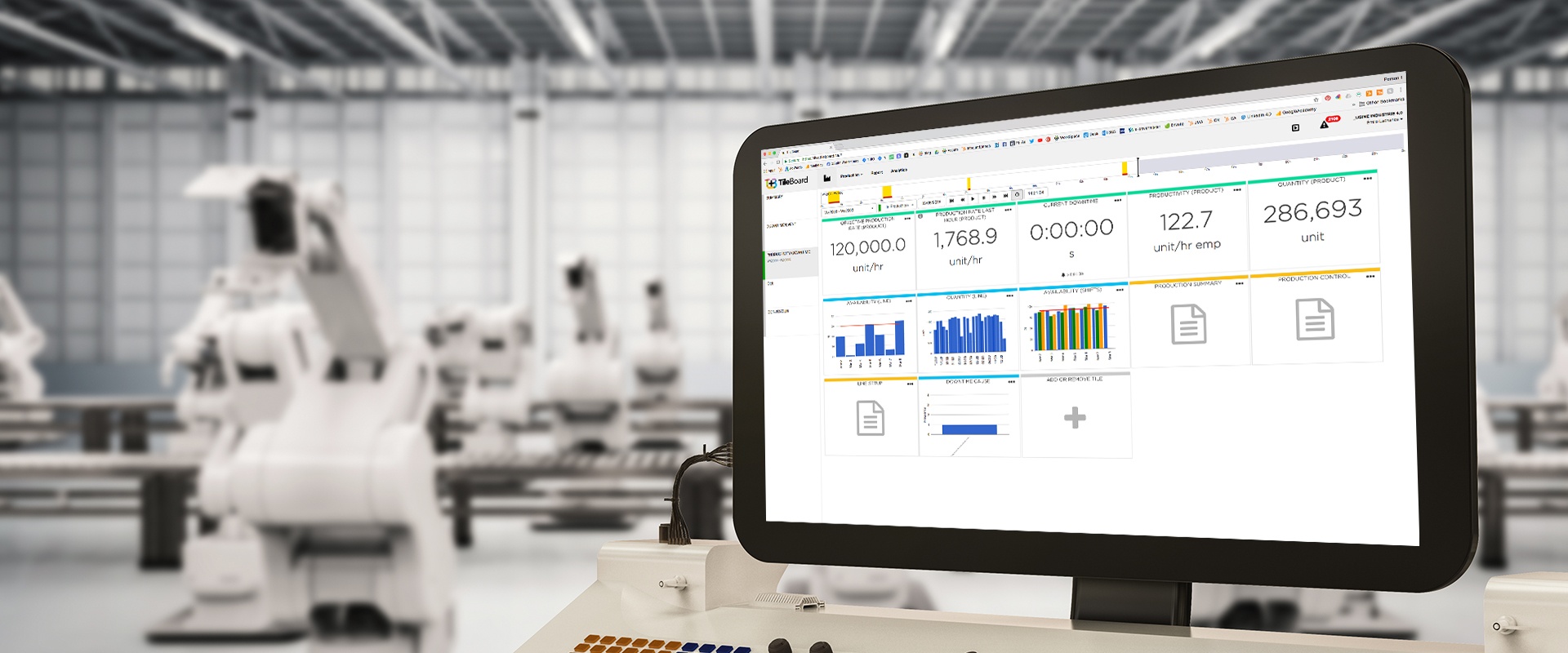Claims about big improvements in efficiency and productivity are common with connected factory solutions, but how is it possible? The answer is that a connected factory allows many improvements to be made throughout the process that add up to impressive numbers. Here’s a rundown of how to maximize improvements in 3 steps:
Step 1 – Connect
Decide what you need to measure, and where. Look at any manual or paper-based processes you rely on to gather data, and the KPIs you already use and such as units produced, machine availability, downtimes, etc. Next, look at your wish list of information you’d like to have. How difficult would it be to capture it using sensors? Often, information that would be overly cumbersome for a human to track is simple to collect automatically. Look for overlap and gaps in the information that’s available and the information that’s needed, and the feasibility of connecting sensors to capture that data and close the gaps.
Step 2 – Measure
The amount of data collected by sensors is massive. Ensure that your IT infrastructure is set up to store, protect, and allow authorized access to your data or take advantage of a secure cloud solution. Keeping everything locked down and inaccessible is not an option for manufacturers who want to be competitive. The availability and utility of tablets and smartphones makes relying on inconveniently located desktop computers a solution whose time has passed.
Implementing a secure mobile solution can genuinely transform productivity. Simply having access to current information no matter where you are is a game changer. Managers can physically be where they’re needed in strategic planning sessions without worrying that something will happen on the floor in their absence and they won’t know about it.
Noticing how, when, why, and what KPIs have variances allows you to fine-tune every cell, every step, every movement until you achieve consistent high performance throughout your facility.
Step 3 – Analyze
Analytics are where the connected factory seriously outperforms those who stay unconnected. Humans can’t come close to machines when collating and analyzing data. Humans are essential to the process, however. The information must be organized and dashboard displays need to be designed to be meaningful. By using analytics as a tool, humans are free to interpret and act on the data.
Time is one of our most limited resources. An IoT solution saves time throughout the production process, giving everyone in your factory additional time resources to act on information instead of collecting or assembling information.
The old computer adage “garbage in, garbage out” still applies. You have to collect the right data, store and organize it in a logical system, and design analytics that work for all aspects of your business. What does finance need to see? What information does procurement need? What do the planners and schedulers need to know? The same central database is available for everyone, but the information they view is customized to suit their needs. With everyone working from the same current data, plans and strategies from different departments are much more likely to be in synch. People can react and make decisions based on the actual state of the business, not what happened weeks ago.
Improvements aren’t limited to the factory floor. Meetings can be much more productive when everyone already has the same data, and there’s no need to wait to receive a report. With a comprehensive data set broken down into in meaningful, user-friendly, visual presentation, it’s much faster and easier to see what’s running well, and where your attention needs to be focused.
Learn more about real-time automatic data collection.















